
Congratulations to Kasia Strek (Poland) for winning the 2025 Sustainability Prize for her series Repairing the Earth. This initiative rewarding photographers passionate about communicating the planet’s biggest challenges is part of Creators for the Planet, a global year-round engagement programme set up by Creo and developed in collaboration with the United Nations Foundation and Sony Pictures.
Strek says about her win:
‘I’m thrilled that my work highlighting success stories of environmental conservation worldwide is being recognised. Among often harsh conditions and multiple obstacles, the people I had a chance to meet have proven that with vision and perseverance, change, even if on a local scale, is possible. I’m hopeful that through this recognition, the work will be widely seen and bring hope that what we do on this planet still matters.’
Strek receives $5,000 plus a range of Sony digital imaging equipment as well as promotion across the World Photography Organisation and Sony Future Filmmaker Awards websites and social media channels.
Speaking about her series, Strek says: ‘Climate change now affects all regions of the Earth, with increased storms, floods, droughts and fires, warming and rising oceans, unprecedented loss of species, scarcity of food and growing displacement. An IPCC report from 2021 states that a UN panel reported that human actions can still determine our climate future. Worldwide, people are succeeding in reversing the trend, halting further decline and restoring what was damaged. In Europe, the region’s largest land mammals – bison –returned to the wild after disappearing a century ago, while in Benin, one of the world’s poorest countries, mangrove forests have been saved through NGOs, political will and local beliefs. Underwater, divers and scientists work to preserve corals threatened by ocean acidification, while thousands of farmers in India have switched to organic crops, restoring soil and adapting to new monsoon patterns. Copenhagen, on track to become the world’s first carbon-neutral city, has cut its emissions by 75 per cent since 2005, proving drastic change is possible.’
Climate change now affects all regions of the Earth, with increased storms, floods, droughts and fires, warming and rising oceans, unprecedented loss of species, scarcity of food and growing displacement. But in 2021, a UN panel reported that human actions can still determine our climate future. Worldwide, people are succeeding in reversing the trend, halting further decline and restoring what was damaged. In Europe, the region’s largest land mammals – bison –returned to the wild after disappearing a century ago, while in Benin, one of the world’s poorest countries, mangrove forests have been saved through NGOs, political will and local beliefs. Underwater, divers and scientists work to preserve corals threatened by ocean acidification, while thousands of farmers in India have switched to organic crops, restoring soil and adapting to new monsoon patterns. Copenhagen, on track to become the world’s first carbon-neutral city, has cut its emissions by 75 per cent since 2005, proving drastic change is possible.
Kasia Strek is a Polish documentary photographer and journalist. Her work focuses on the intersections of gender, social inequalities, and the impact of climate change on the environment, highlighting underrepresented topics of social importance. She has received numerous recognitions, including the Pulitzer Grant for Crisis Reporting, the IWMF Courage in Journalism Award, and Visa Pour l'Image Camille Lepage Award. Her work is published by leading media outlets and exhibited worldwide.
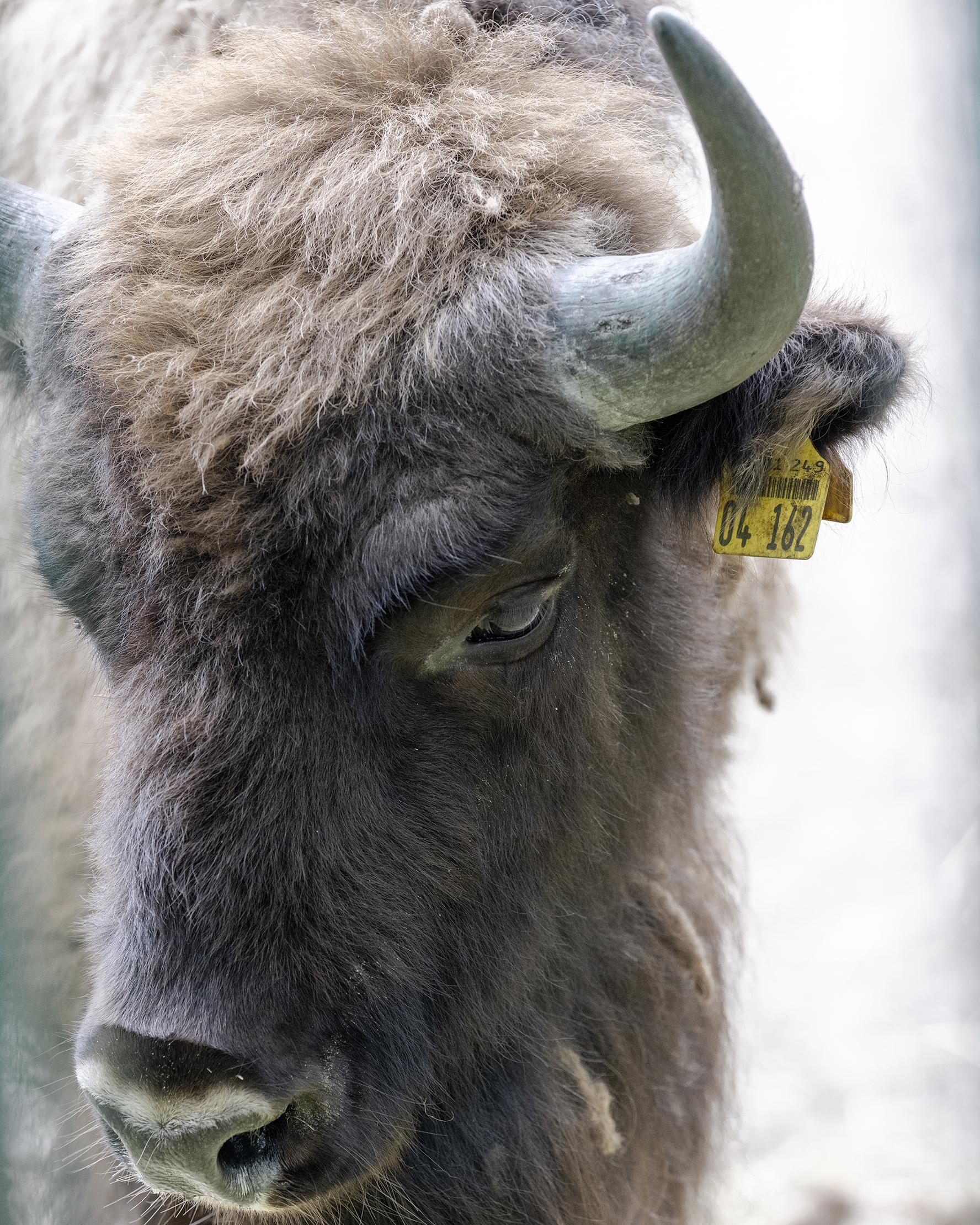
In Berlin, the hub for European Bison reintroduction, each animal is given a number and a name for recognition. This species was extinct in the wild at the start of the 20th century and its reintroduction was the world's first successful undertaking of this kind. Here, a young male named Homas is among seven bison planned to be sent to Azerbaijan, where WWF and other local partners run a new reintroduction program. Berlin, Germany.
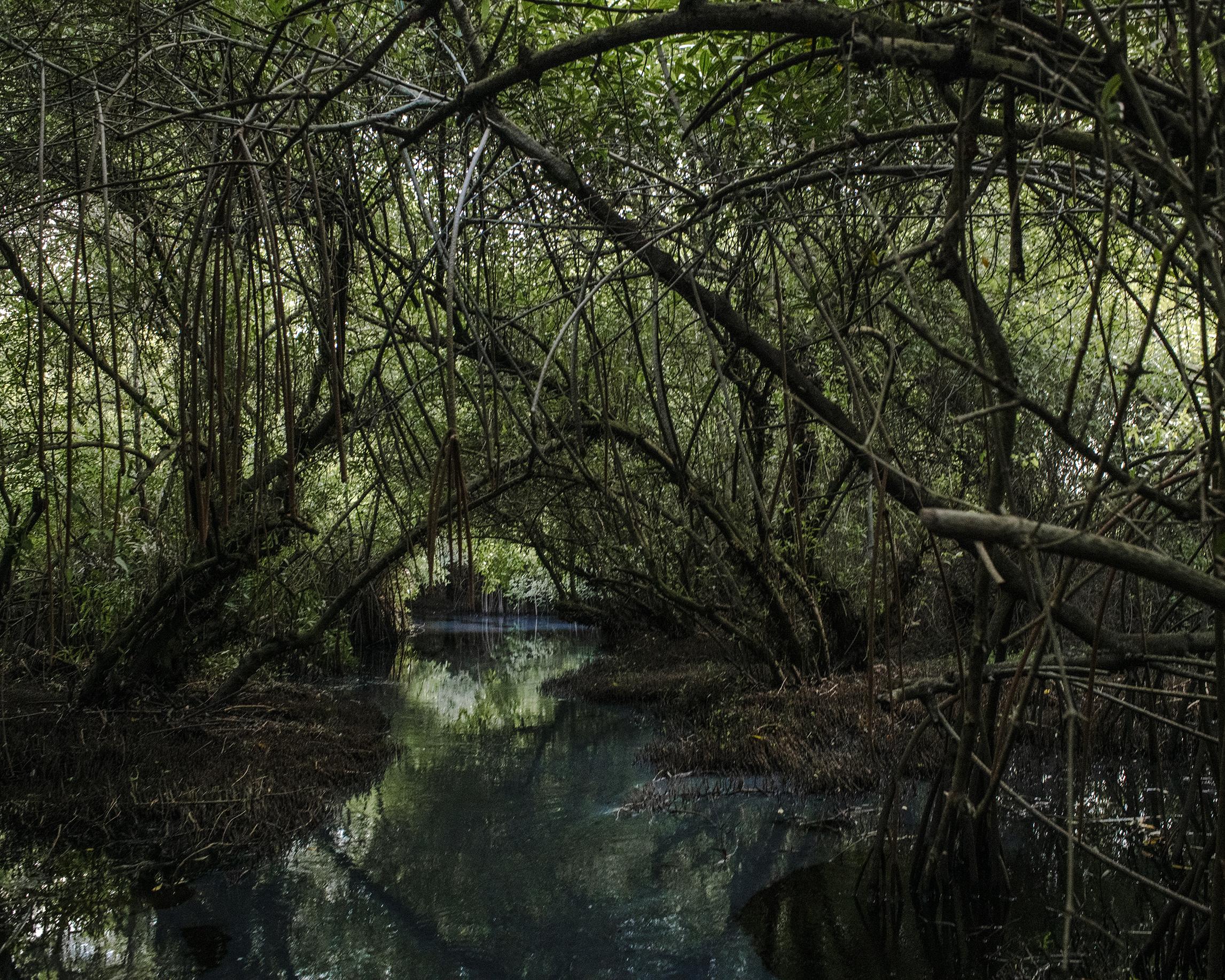
The mangrove forest of Togbin was sacralised with voodoo divinity in 2009 to stop the population from illegally logging the precious wood, with legal conservation starting in 2011. When the protection started, the forest was covering 94 hectares, but it now covers 407 hectares, including 207 hectares of mangrove swamp. The community was provided with alternative sources of income, including farming, conservation work and tourism now that people are coming to experience the beauty of the forest. Togbin, Benin.
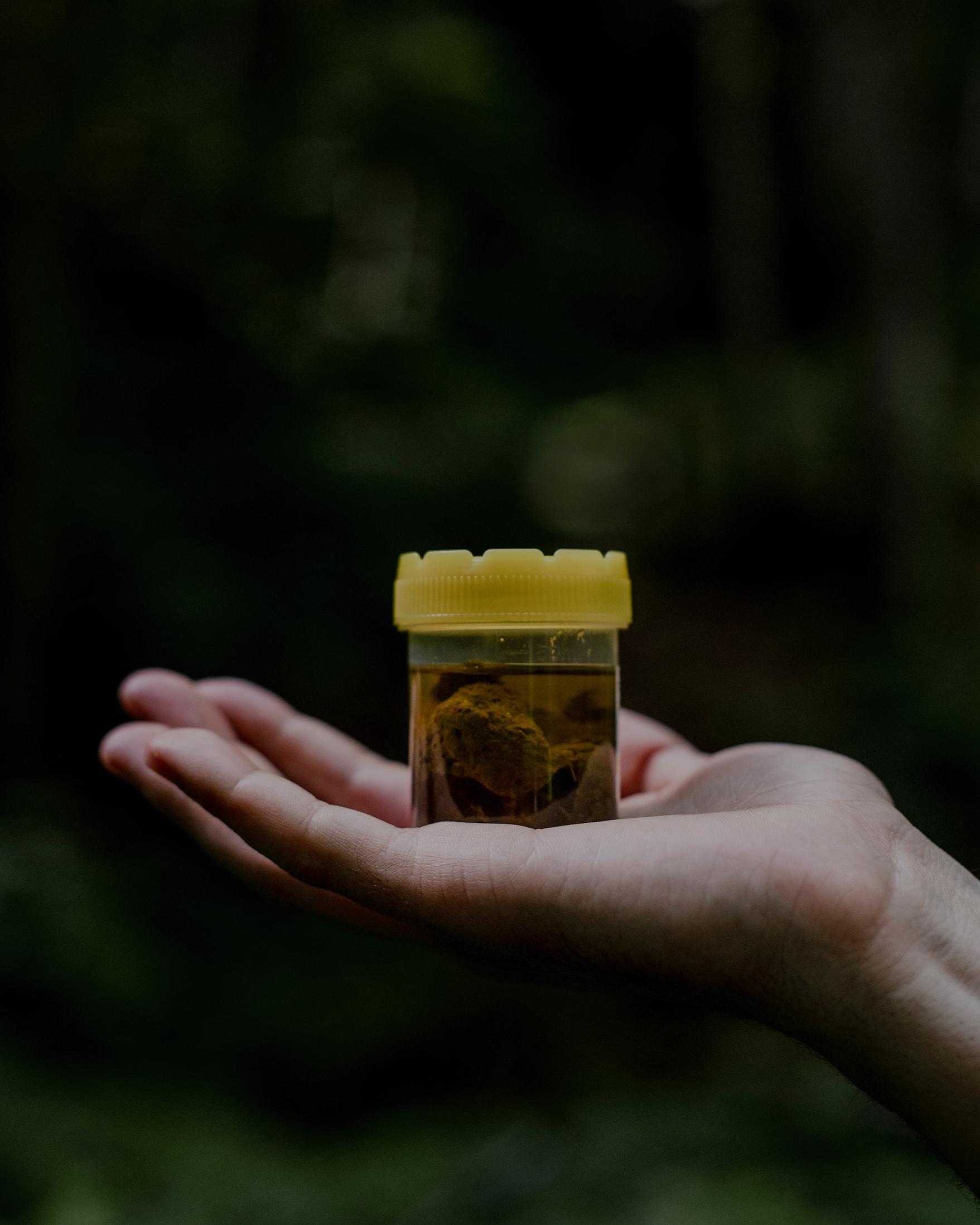
Today, there are around 200 European Bison living in the mountains of southwest Romania, among virgin forests and natural grasslands. They are the result of reintroductions to the region over the last 12 years. Here, a DNA sample from a bison’s excrement and fur is collected in an ethanol-filled flask. Collected during forest patrols by WWF rangers, the samples are transported to a lab in Germany, where they are tested to see the genetics of bison and the structure of the herd, as well as for parasitological and diet studies. Armenis, Romania.
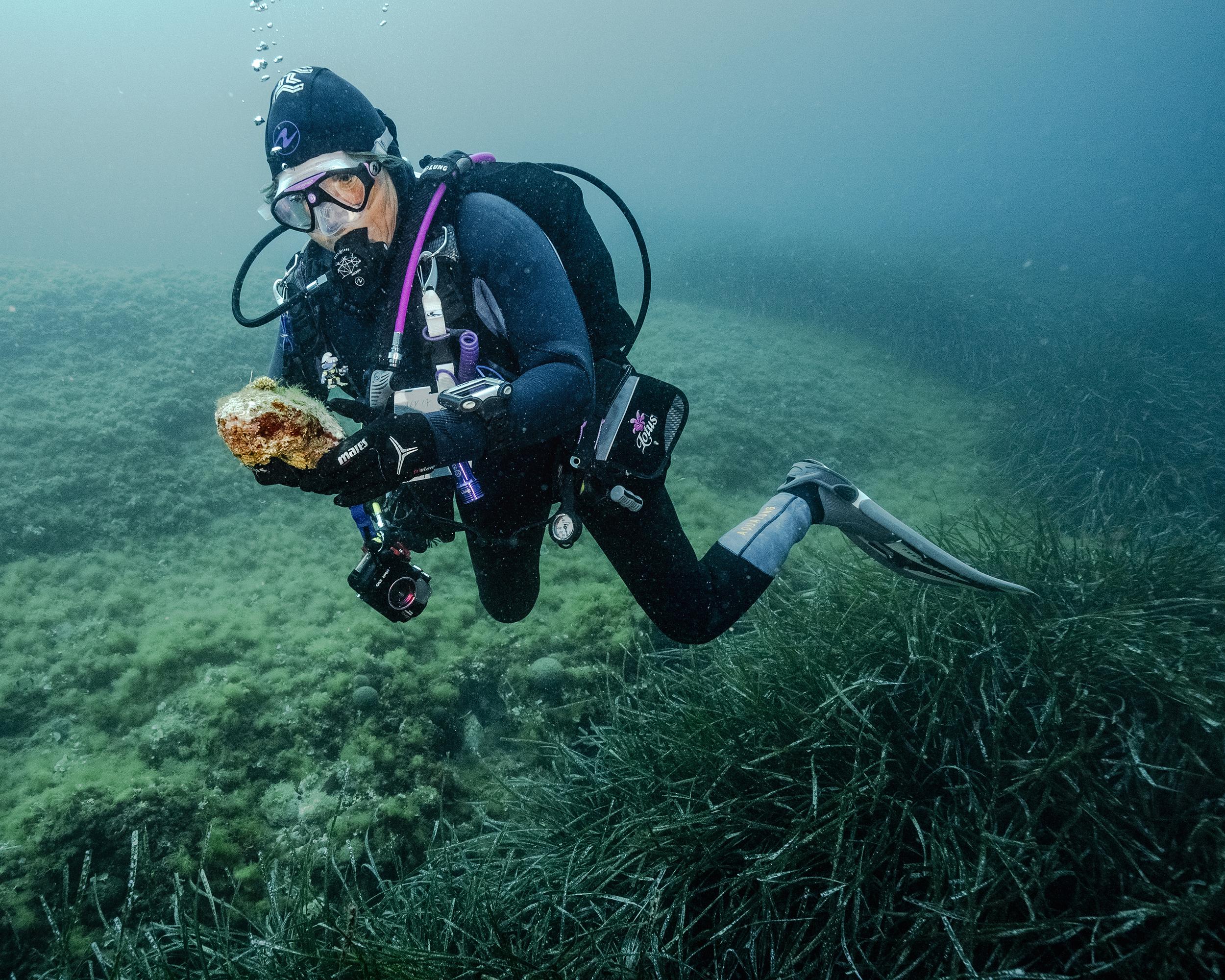
Sandrine Treyvaud, founder of Ocean Quest France, shows a small Cladocora caespitosa (cushion coral) that she named ‘Sandy Baby.’ Sandy was the first coral discovered by the association. Although it bleached, Sandrine replanted six of its polyps on a new underwater rock in 2020. Today there are 32 polyps and Sandrine sees this as tangible proof that these corals can survive and grow after being replanted. Toulon, France.

In part of the laboratory at Monaco Scientific Center (CSM), the world's biggest coral research base, an experiment has been running in tanks for the past 14 years. Here, Stylophora pistillata polyps are subjected to the probable acidification of the oceans by 2100, caused by the absorption of atmospheric CO2 accumulated due to human activity. This enables scientists to observe how they adapt and what structural changes they are going through. Monte Carlo, Monaco.
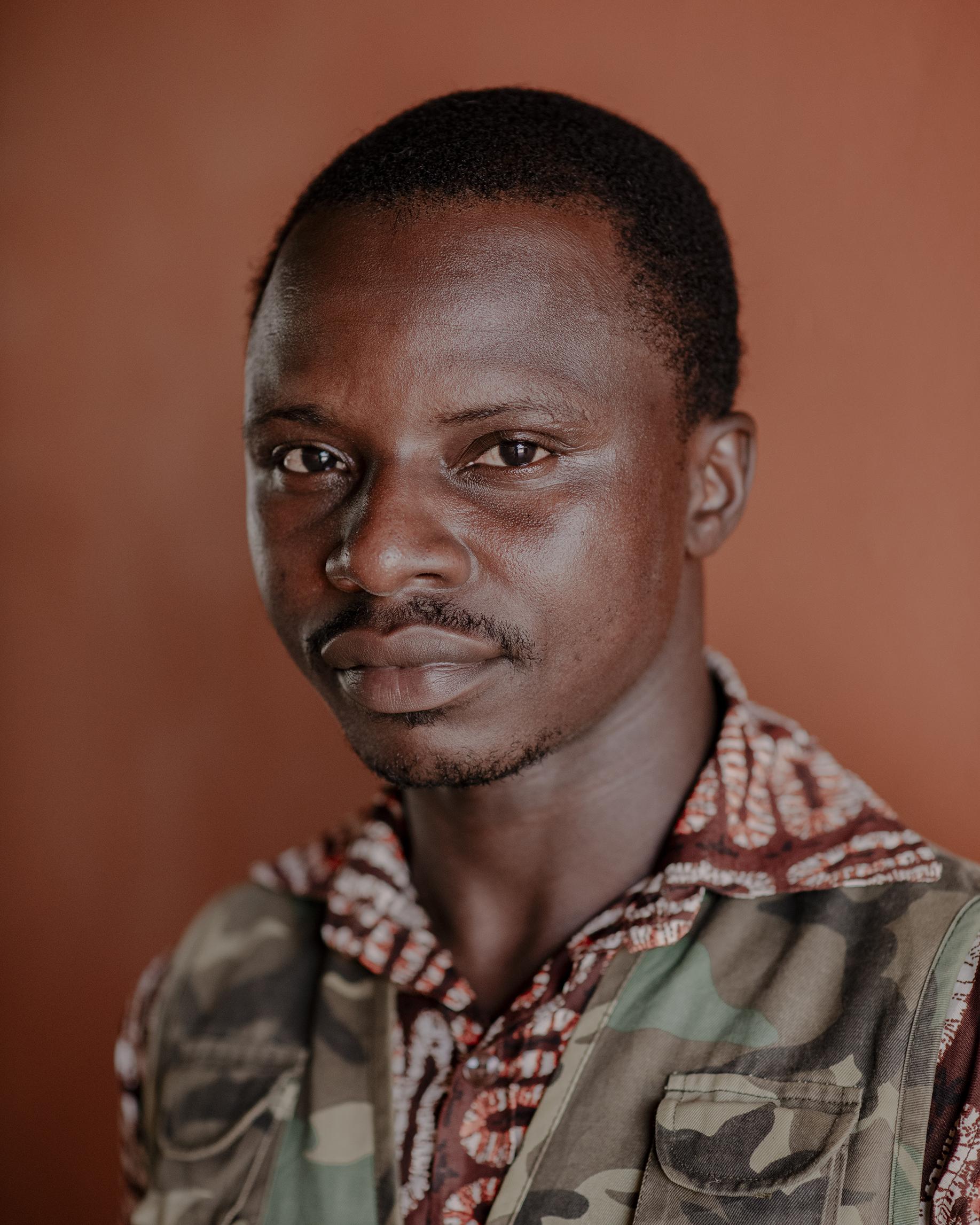
Eric Apithy is a geographer working for the Coordination of Environmental Research and Development NGO in Benin. He supervises a 30-hectare mangroves restoration project in the protected area of the Mono River delta and coordinates educational efforts in local schools. He also monitors all the setbacks with the project. The most significant of these happened in Agbanlindjèhoué, when a Chinese public works company dumped tonnes of sand on mangrove habitat. Ouidah, Benin
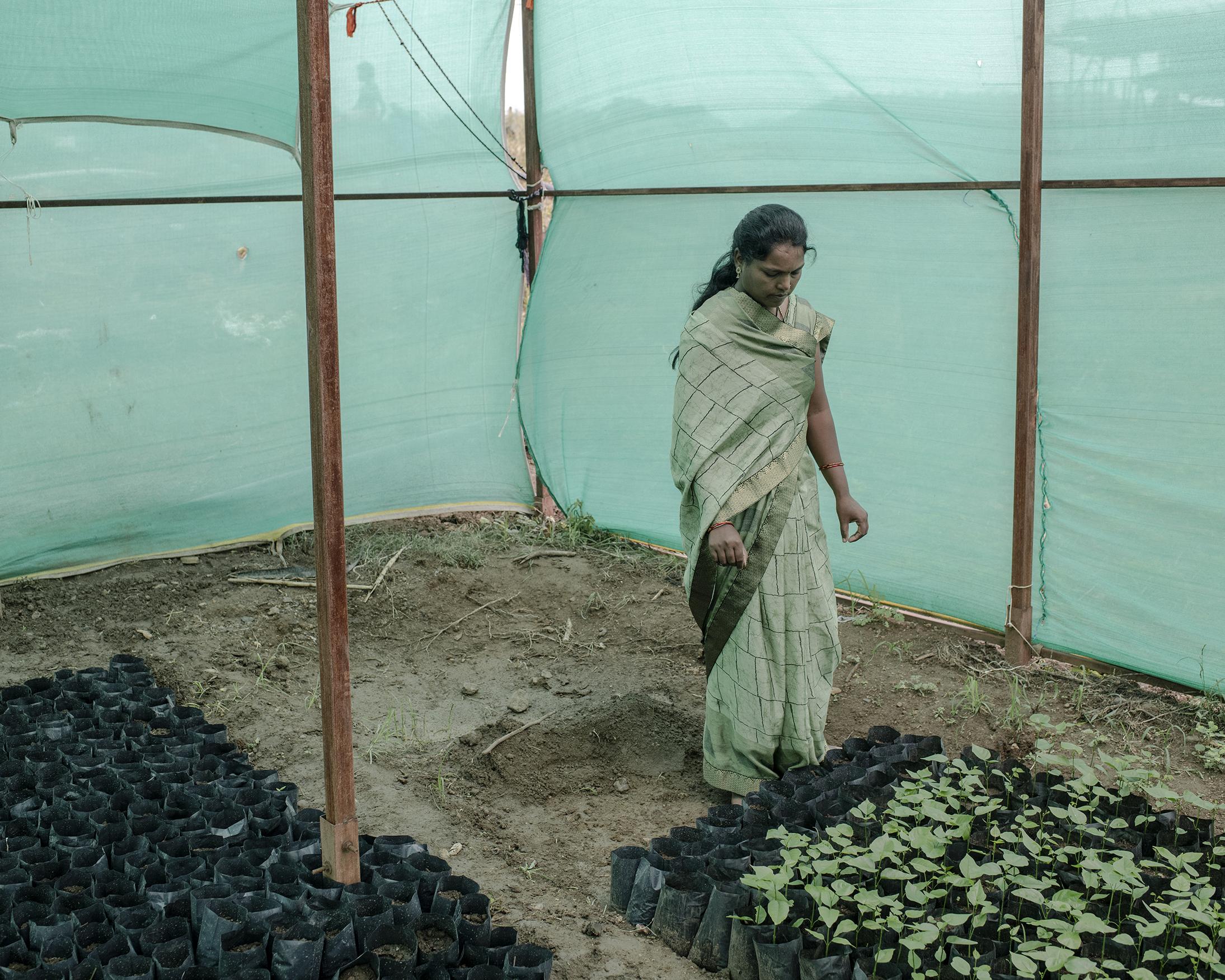
Shalu Khandate from Sawangi village survived on genetically modified cotton production until just a couple of years ago. Since then, with help from the Srijan association, she and other women from her community started growing vegetables and other crops. She also opened a greenhouse where she grows seedlings from red gram, Mahua plant (Madhuca longifolia) and other local plants. She says she no longer depends on monsoons for survival. Sawangi village, Madhya Pradesh, India.
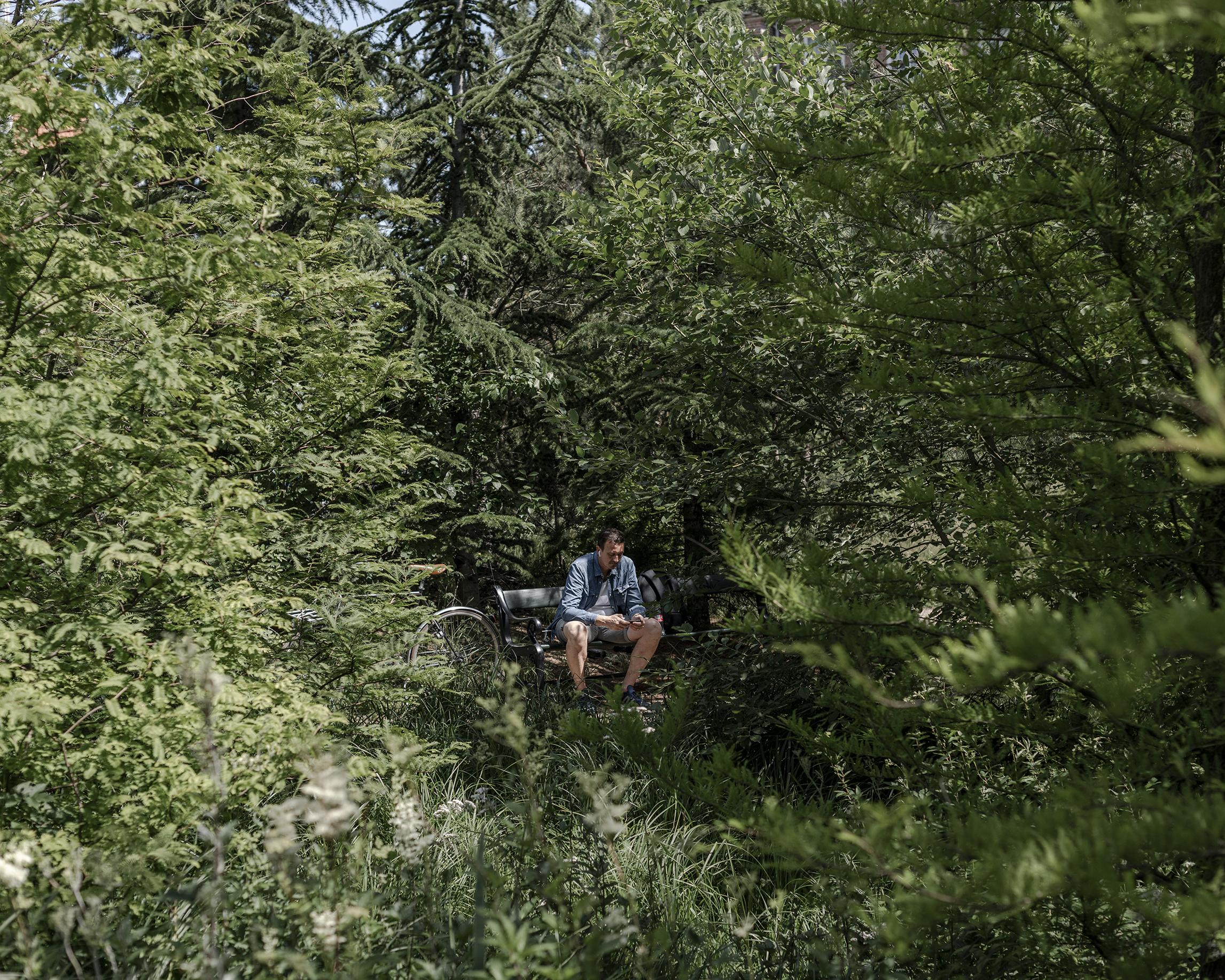
In Sankt Kjelds Plads, which was hit by flooding in 2014, the city of Copenhagen wanted to get a better understanding of how much greenery and forest-like areas could be created within the city, while at the same time handling rainwater and cloudbursts. Here, a cyclist rests in the middle of a green-arranged roundabout in Sankt Kjelds Plads. This coexistence of nature and urban infrastructure is believed to be the future of sustainable cities. Copenhagen, Denmark.

